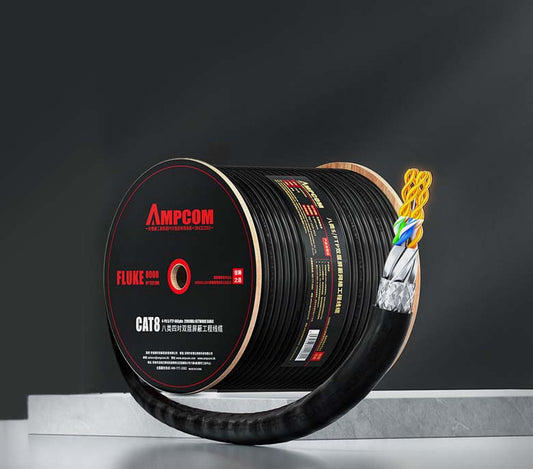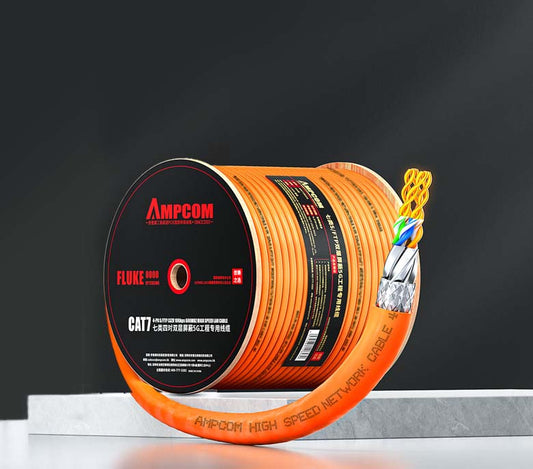The Verifiable Limits of 10G over Cat6: Field-Proven Boundaries and a Quick AXT Check
Last updated: October 30, 2025
In clean office wiring with short patching and light bundling, 10G on Cat6 often holds at ~55 m, and with mitigation sometimes to ~70 m. If you see dense bundles, multiple cross-connects, aged terminations, or mixed patch-cord gauges, expect shorter. Verify with a quick alien-crosstalk check before committing. If in doubt, jump to this Cat6 10G overview and our AXT mitigation guide.
Everyone asks the same thing: “Can my existing Cat6 do 10G?” The standard answer is conservative because it must cover worst-case cabling. In the field, your results hinge on a small set of variables you can measure: insertion loss, return loss, alien crosstalk (AXT), bundling density, patching count, and the patch-cord gauge/length mix. This guide shows how to turn those into a repeatable go/no-go decision—without a lab.
Why Cat6 sometimes works—and sometimes doesn’t
Cat6 was optimized for 1G and can support 2.5/5G widely (see our NBASE-T upgrade paths). 10G pushes signalling margins much harder. The limiting factors you’ll see most often:
- Alien Crosstalk (AXT): Energy coupled from adjacent channels in bundles. High-density trunks and crowded ladder racks are red flags. Start with our AXT mitigation basics.
- Link Topology: Each added mated connection (patch panel, consolidation point, coupler) eats margin. Keep the channel simple; avoid unnecessary cross-connects. See component vs. channel testing.
- Patching Mix: Long or multiple thin-gauge patch cords near the PHY increase loss and jitter. Prefer Cat6/6A 24–26AWG near the switch.
- Bundle Geometry: Tight ties and long parallel adjacency raise AXT. Loosen, stagger, or re-route.
- Age & Terminations: Oxidized plugs/jacks and sloppy pair-untwist shorten practical reach. Re-terminate any suspect ends before testing.
A quick field AXT check you can trust
You don’t need a full lab to derisk AXT. Use this 10-minute “worst-neighbor” probe before promising 10G:
- Select one “victim” Cat6 channel you plan to run at 10G.
- Identify its six closest parallel neighbors over the longest common run (ladder rack, cabinet entry, or vertical manager).
- On those six, generate traffic (ideally 1G or higher) while you qualify the victim link with your certifier at 500 MHz. If your instrument supports AXT, record PSANEXT/PSAACR-F; if not, capture SNR margin and error counters during a sustained 10G link attempt.
- Temporarily tighten the bundle with two soft ties to simulate worst case; then loosen to your intended production dressing and re-test. The delta shows your sensitivity to bundling.
If your worst-neighbor check passes with >3 dB aggregate margin at 500 MHz and error-free link up for 10+ minutes, you’re in the “probable pass” zone for that topology. If it barely passes only when loosened, derate length or mitigate AXT (spacing, separators, or jump straight to Cat6a-style mitigation).
Three realistic profiles we see in the field
- Profile A — Clean office runs: Light bundling (<12 adjacent), 1–2 mated connections, short Cat6 patching (≤6 m total), tidy dressing. 10G viable to ~55 m; sometimes ~70 m with good terminations.
- Profile B — Busy IDF bundles: 24–48 adjacent, tight ties at ladder rack, mixed patch-cord gauges, 3–4 mated connections. Expect 35–50 m.
- Profile C — High-density data hall: Long parallel adjacency, multiple cross-connects, historical re-terminations. Plan Cat6a or shorten aggressively (≤35 m). Consider jumping to Cat6a mitigation.
A go/no-go matrix you can validate
| Variable | Green | Yellow | Red |
|---|---|---|---|
| Bundle adjacency | <12 parallel | 12–36 | >36 tight |
| Mated connections | ≤2 | 3 | ≥4 |
| Patch-cord mix | 24–26AWG, ≤6 m total | 26–28AWG mix, ≤10 m | Long thin cords, daisy-chained |
| AXT quick check | >3 dB margin | 0–3 dB | <0 dB or link errors |
Read the worst column you hit: all-green ~55–70 m; any yellow → cap at ~35–55 m; any red → either mitigate AXT, simplify topology, or move to Cat6a. If you’re driving AV transports, see our HDBaseT cabling guide and 4K60 patch-cord selection.
Fast wins before you measure
- Replace rack-end thin patching with short 24–26AWG cords; avoid daisy-chaining couplers.
- Loosen the tightest ties, add spacing or separators at the ladder rack throat.
- Re-terminate any oxidized or suspect ends (and avoid over-untwisting). Use quality field-termination plugs where appropriate.
- If PoE is present, mind heat: thin cords and large bundles increase temperature and noise. See our PoE voltage-drop guide and 28AWG trade-offs.
Upgrade paths that avoid full recabling
- Shorten & simplify: remove one mated connection and 5–10 m of parallel adjacency; often worth 5–15 m extra reach.
- Hybridize at the rack: keep Cat6 horizontals, swap only rack-end patching to Cat6a; apply AXT spacing at entry.
- Segment the noisiest trunks: re-route high-density segments and reserve 10G for the quieter links; keep others at 2.5/5G (NBASE-T).
Related reading: Can Cat6 do 10G? · Alien Crosstalk mitigation · Component vs Channel testing · PoE voltage drop · 28AWG trade-offs
FAQ
Can Cat6 ever reach 100 m at 10G?
Not reliably. That’s what Cat6a is designed for. Cat6 10G is a best-effort, environment-dependent reach that you must verify.
Is AXT the only limiter?
No. Insertion loss, return loss, patching count, and poor terminations all matter. AXT just tends to be the silent limiter in dense bundles.
Do thin 28AWG patch cords hurt 10G?
They increase loss and can raise temperature in bundles. Keep them short or prefer 24–26AWG near the PHY.
What if my AXT quick check fails?
Shorten/space the bundle, remove a mated connection, upgrade patching to Cat6a, or keep the link at 2.5/5G.



